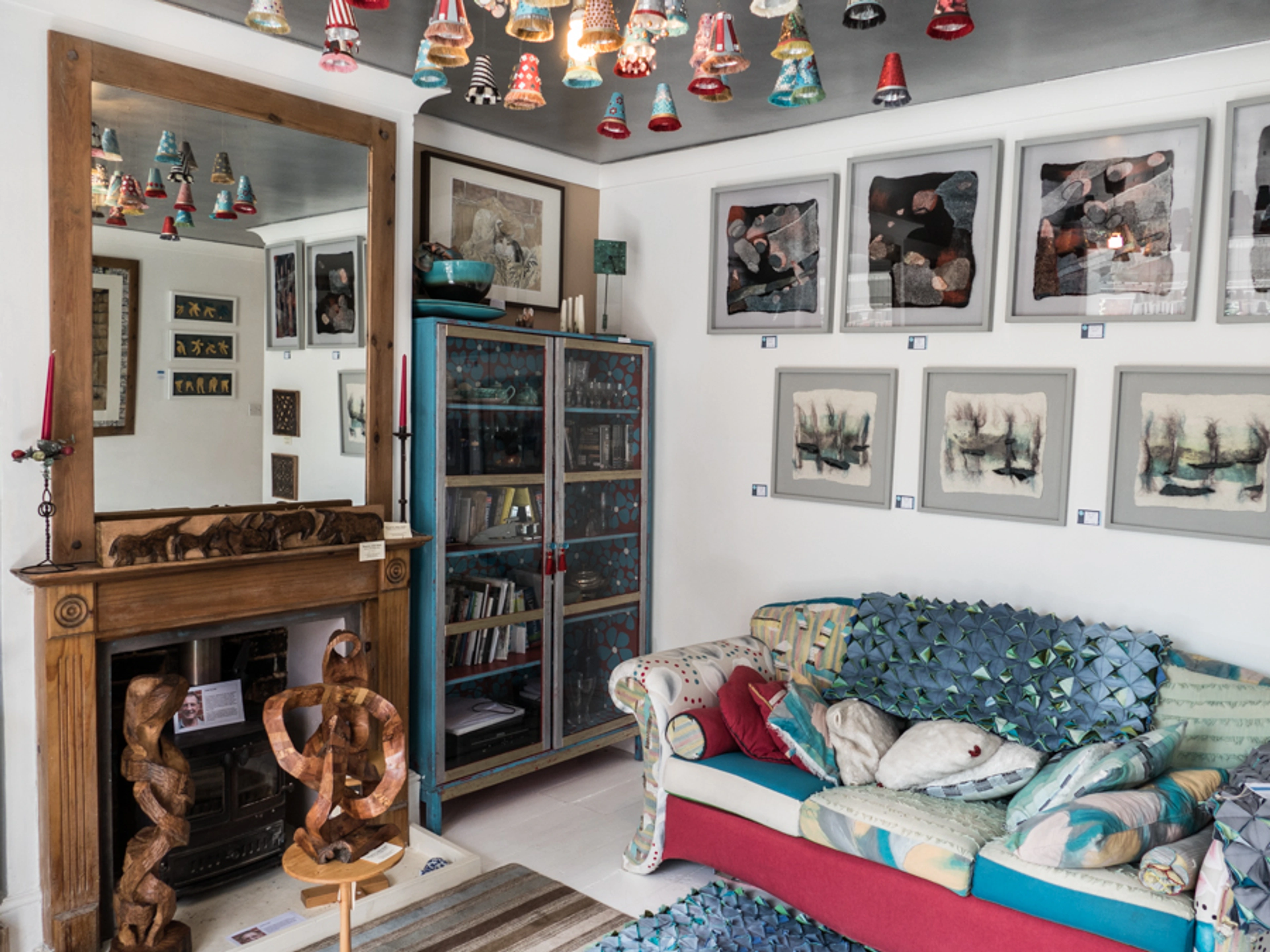
Art About Nature: History, Styles, Psychology & Bringing the Wild Home
Explore the deep, enduring connection between humans and nature through art. Discover its global history, diverse styles (Realism, Abstract, Land Art & more), psychological impact (Biophilia, fractals, colors), techniques, and practical tips for bringing nature-inspired art into your home, including integrating nature itself. An artist's personal journey.
Art About Nature: Why We're Drawn to the Wild Canvas
Nature. It's the ultimate muse, isn't it? From the towering mountains that make you feel impossibly small to the quiet persistence of a single wildflower pushing through concrete, there's something inherently powerful and endlessly inspiring about the natural world. And 'nature' itself is such a vast concept, isn't it? It's not just the grand landscapes; it's the intricate patterns of a leaf, the chaotic energy of a storm, the quiet hum of an ecosystem, the vastness of the cosmos, or even the microscopic details of life. As an artist, I've spent countless hours trying to capture just a sliver of that feeling, that raw energy or serene beauty, whether it's through vibrant colors or abstract forms. It's less about depicting a scene exactly as it is, and more about channeling the essence of the wild, the rhythm of the wind, the quiet hum of growth. Sometimes, trying to paint a specific tree feels like trying to catch smoke – it's the feeling of the tree, its rootedness and reach, that I'm after.
It got me thinking: why are we, as humans, so consistently drawn to art that depicts nature? It's not just about pretty pictures of trees and sunsets (though, let's be honest, a good sunset painting can really hit the spot). It's something deeper. It's a connection that spans centuries and cultures, showing up in everything from ancient cave paintings to cutting-edge contemporary installations. This article will take you on a personal journey through the global history of nature art, explore the diverse ways artists interpret the wild, delve into the psychology behind our connection, examine the techniques they use, and offer practical tips for bringing that connection home through art.
Nature as the Original Inspiration: A Timeless, Global Muse
Before we had bustling cities and screens, we had... well, nature. It was our home, our provider, our mystery, and our danger. It makes perfect sense that it was one of the very first subjects for artists. Art wasn't just about aesthetics; it was about understanding, respecting, and perhaps even trying to influence the world around them. Nature was life itself, the source of food, shelter, and spiritual belief. Depicting animals was often tied to hunting magic or reverence for their power, while plants could symbolize fertility, sustenance, or healing. It's a profound continuity, isn't it? Thinking about ancient hands painting bison on a cave wall, driven by a need to connect with the wild world for survival and meaning, feels strangely connected to my own drive to capture the energy of a storm on canvas today. The medium changes, but the muse endures.
Think about it: the earliest art we know of, like the incredible Lascaux cave paintings in France or the depictions in ancient Egyptian tombs, often showed animals, hunting scenes, and vital plants. For instance, the tomb of Nebamun in ancient Egypt features vibrant frescoes of birds, fish, and lush gardens, not just for decoration but reflecting beliefs about the afterlife and the abundance of nature. This deep connection wasn't limited to early Western or Middle Eastern cultures. Across the globe, Indigenous art traditions are profoundly tied to the land, depicting creation stories, animal spirits, and the intricate balance of ecosystems. Ancient Mesopotamian cylinder seals featured intricate nature motifs, and Greek and Roman art, while often focused on the human form, incorporated detailed depictions of landscapes, flora, and fauna in frescoes and mosaics, reflecting both observation and mythology. A famous example is the Villa of Livia near Rome, with its stunning frescoed garden room, creating an immersive natural environment indoors.
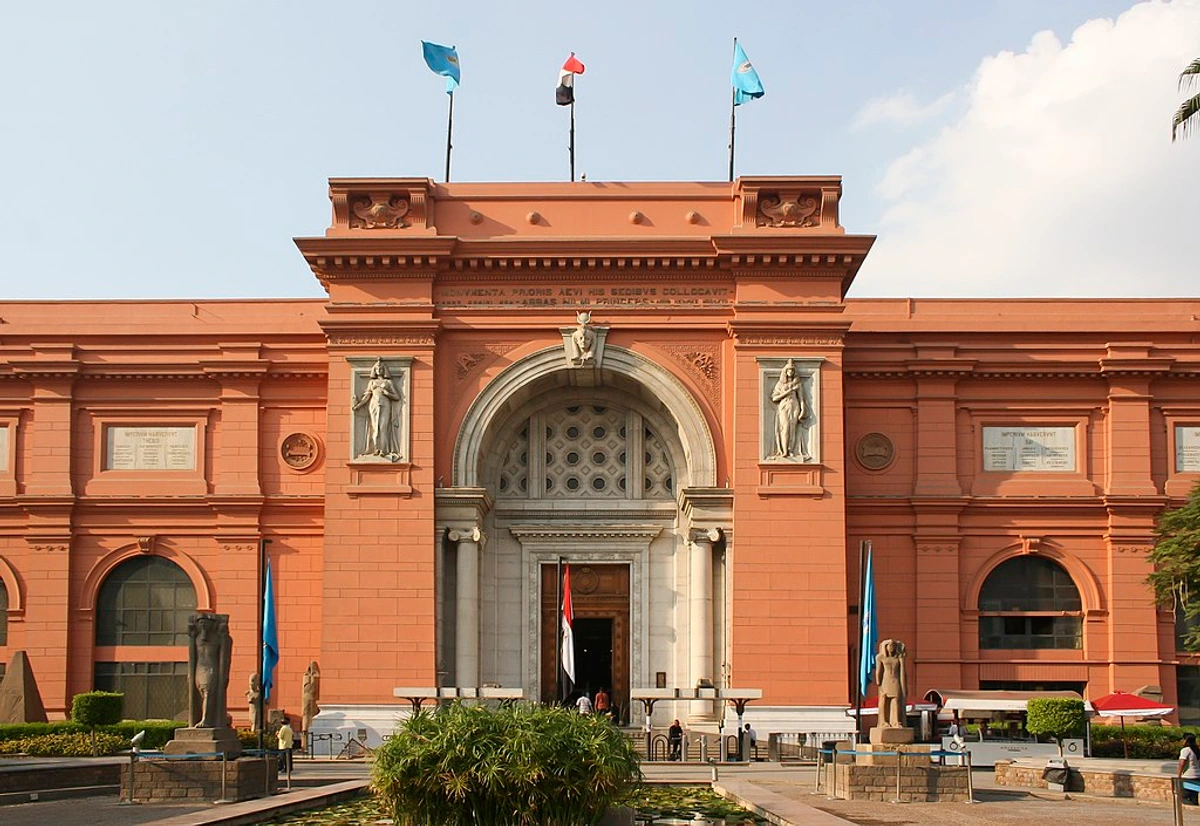
Moving into the medieval period, while religious themes often dominated, nature still found its way into art, albeit often in a stylized or symbolic manner. Think of the intricate floral borders and depictions of animals in illuminated manuscripts, the symbolic use of plants in religious paintings, or the natural motifs woven into tapestries. Nature was present, but often filtered through a lens of symbolism and decorative pattern, reflecting a different kind of relationship than the direct observation of later periods.
Over time, this relationship evolved. In many cultures, nature was seen as divine, full of spirits or gods. Art reflected this reverence, depicting landscapes as sacred spaces or using natural forms symbolically. It wasn't just about what you saw, but what it meant. Think of the symbolic use of trees in various mythologies or the depiction of powerful natural forces in ancient art. The Renaissance brought a renewed focus on scientific observation, leading to incredibly detailed botanical illustrations and anatomical studies that, while scientific, also possessed immense artistic beauty, bridging the gap between objective reality and aesthetic appreciation. Artists like Leonardo da Vinci filled notebooks with meticulous studies of plants and water flow, demonstrating this blend of scientific curiosity and artistic wonder.
Meanwhile, in East Asia, particularly China, landscape painting developed into a highly sophisticated and revered genre centuries before it gained similar prominence in the West. Traditional Chinese landscape painting (Shanshui, meaning "mountain-water") wasn't just about depicting scenery; it was a philosophical and spiritual practice, aiming to capture the qi (life force) and harmony of nature. Artists sought to convey the vastness and rhythm of the cosmos through brushstrokes, often leaving significant areas of empty space to represent mist or the void. These works were deeply contemplative, inviting the viewer to wander mentally through the landscape. This tradition, alongside Japanese landscape prints like Ukiyo-e by masters such as Hokusai and Hiroshige, which captured the beauty and power of mountains, rivers, and coastlines with exquisite detail and composition, demonstrates the global, enduring pull of nature as a muse.
Then came the landscapes we might be more familiar with, especially from Western art history. Artists started trying to capture the feeling of a place, the light, the atmosphere. Think of the Dutch Masters with their vast skies or the Romantic painters like Thomas Cole and the Hudson River School in America, who saw nature as a powerful, emotional force, often reflecting human drama within grand vistas.
![]()
This global perspective shows that the pull of nature is a universal thread in the tapestry of human creativity. But what about other parts of the world? Nature has been central to artistic expression in countless cultures. In many African traditions, art is deeply intertwined with the spiritual power of the land, animals, and natural forces, often expressed through masks, sculptures, and textiles used in rituals. Indigenous art from the Americas frequently depicts creation myths tied to specific landscapes, reverence for animal spirits, and the interconnectedness of all living things, using materials like wood, stone, fibers, and natural pigments. Pacific Islander art, from intricate carvings to tapa cloth, often draws on marine life, plant forms, and the vastness of the ocean, reflecting a deep connection to their island environments. These diverse traditions, though vastly different in form and philosophy, underscore the fundamental human impulse to understand, honor, and depict the natural world that sustains us.
Different Ways Artists See Nature: A Spectrum of Interpretation
Nature isn't a monolith, and neither is the art it inspires. Artists have found countless ways to interpret the natural world, often reflecting the prevailing art styles and philosophies of their time, or just their own unique perspective. It's like looking at the same forest through a hundred different pairs of eyes. So, how exactly have artists tackled this wild subject? Well, they've found quite a few ways...
Let's explore some of the key approaches, keeping in mind that many artists blend these or forge entirely new paths:
- Realism and Naturalism: This is perhaps the most straightforward approach – trying to depict nature as accurately as possible. Think detailed botanical illustrations or landscapes that look almost like photographs. It's about capturing the specific beauty of a place or subject with fidelity. It requires incredible observation and patience, trying to get every leaf and shadow just right. Honestly, sometimes I admire the dedication, but my brain just doesn't work that way; I get lost in the details instead of the feeling. While I appreciate the skill, my own process tends to veer away from such literal representation, seeking the underlying energy instead. Trying to render every single blade of grass? My hand cramps just thinking about it!
- Romanticism: Emerging in the late 18th century, Romanticism viewed nature as a powerful, awe-inspiring force, often wild and untamed, capable of evoking intense emotions – from terror to sublime wonder. Artists like Thomas Cole or J.M.W. Turner depicted dramatic landscapes, storms, and natural disasters, using them to explore themes of human vulnerability, spirituality, and the overwhelming power of the natural world. It's less about objective observation and more about the emotional response nature provokes.
- Impressionism and Post-Impressionism: These movements were less about perfect detail and more about capturing the sensation of nature, especially the fleeting effects of light and color. Artists like Claude Monet and Vincent van Gogh sought to convey the immediate visual impression or the emotional response to a scene. Monet's haystacks or water lilies, or Van Gogh's swirling skies are iconic examples. They were chasing light and feeling, which I can totally relate to. I remember trying to paint en plein air once – basically, painting outside. Romantic in theory, less so when a sudden gust of wind sends your easel flying or a rogue fly decides your wet paint is a nice place to land. It gives you a new appreciation for the Impressionists who did this regularly! It also makes you realize that capturing nature isn't just about copying what you see; it's about wrestling with the elements, both external and internal. It's a dialogue, sometimes a struggle, between the artist and the untamed world.
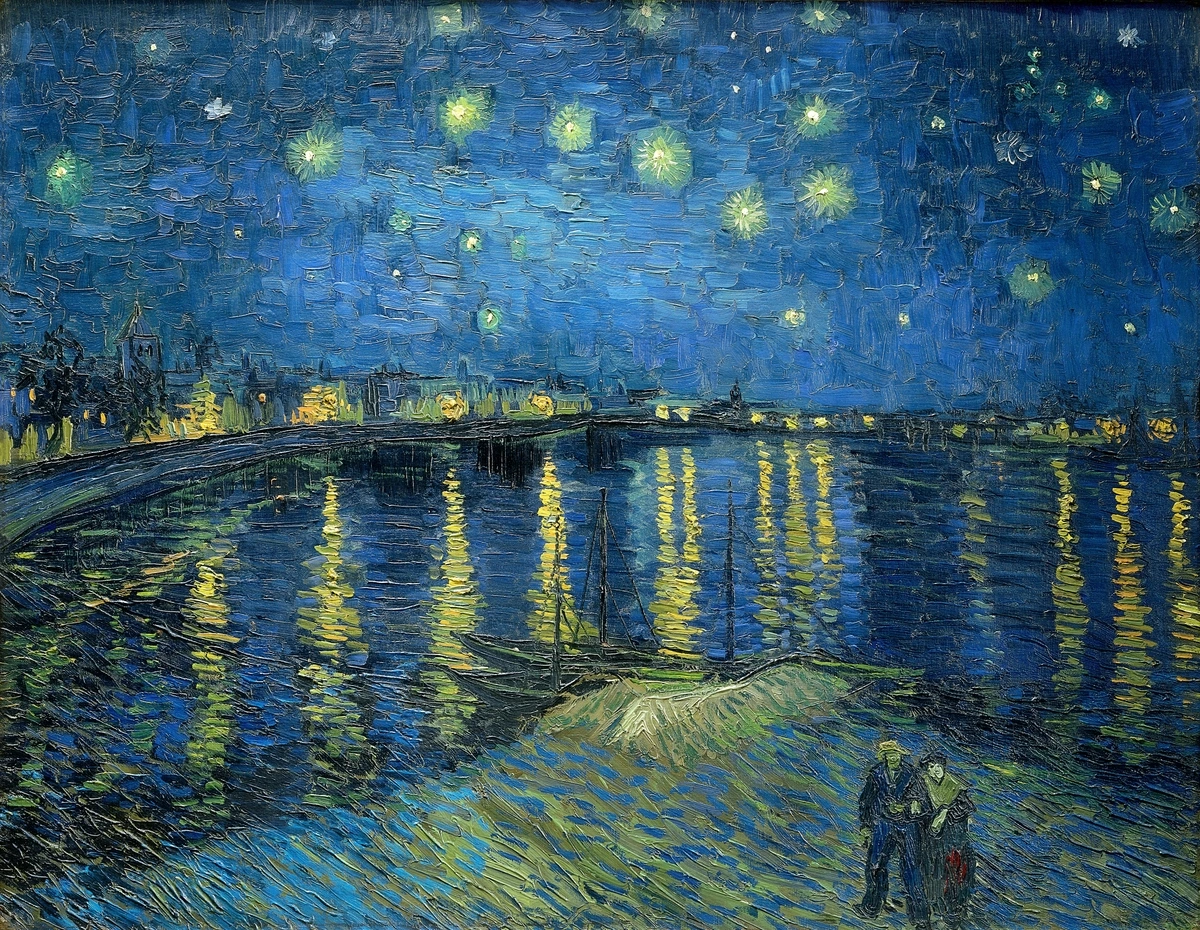
- Luminism and Tonalism: These late 19th-century American movements focused specifically on capturing the effects of light and atmosphere in landscapes, often with a serene or spiritual quality. Luminism emphasized clear, crisp light and detailed observation, while Tonalism used muted colors and soft transitions to evoke mood and atmosphere, often depicting misty mornings or hazy sunsets. They were obsessed with the subtle shifts of light, which, honestly, is a challenge I still grapple with – how do you paint that exact glow just before the sun dips below the horizon?
- Fauvism: Speaking of color, the Fauvists, like Henri Matisse and André Derain, used intense, non-naturalistic colors to express their emotional response to nature. Landscapes exploded with vibrant, often clashing hues, prioritizing expressive color over realistic depiction. It's like nature on hyperdrive, seen through a filter of pure emotion. Where Realism seeks fidelity, Fauvism embraces feeling through bold, subjective color choices. It's a style that speaks directly to the gut, bypassing the need for literal representation. Think of Matisse's vibrant views of Collioure – the colors aren't 'real', but they capture the feeling of Mediterranean light and warmth.
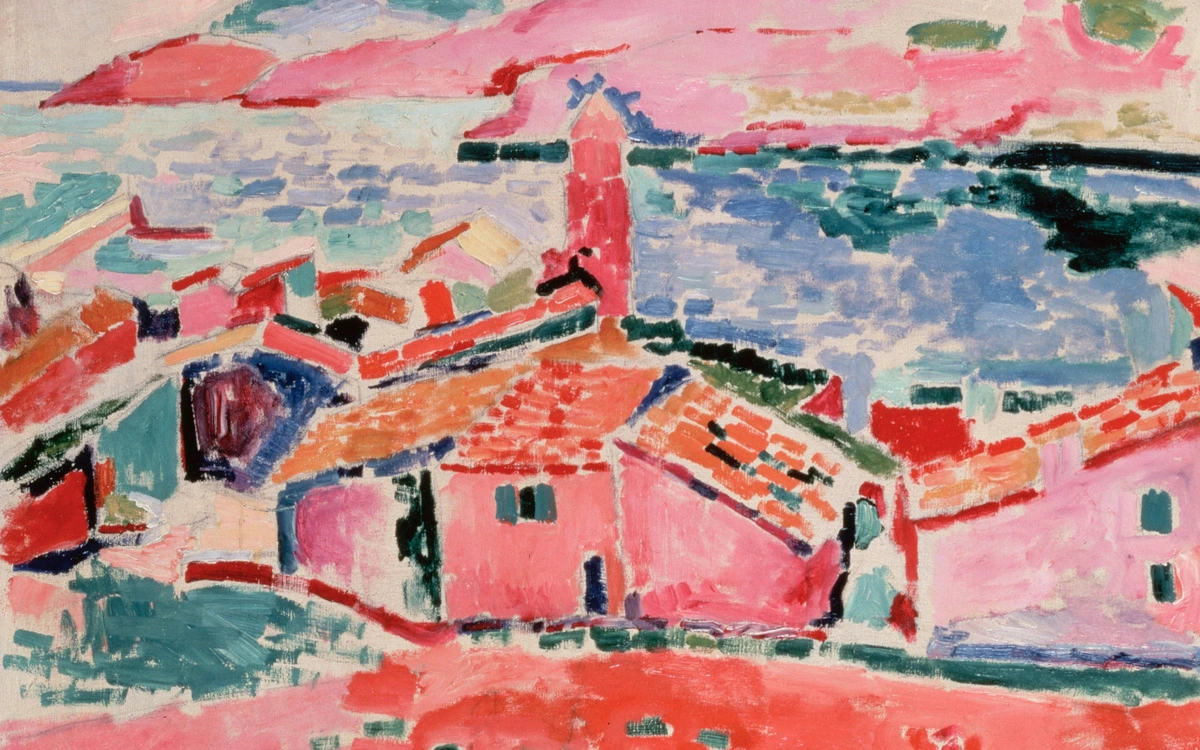
- Expressionism: Here, nature becomes a vehicle for expressing inner emotions and psychological states. The landscape is distorted or colored intensely to reflect the artist's feelings, not just what's literally there. Artists like Franz Marc (with his vibrant animals) or Edvard Munch (with his turbulent skies in "The Scream") used nature to explore psychological states. It's less about the tree itself and more about the feeling the tree evokes in the artist, often with a sense of angst or intensity that distinguishes it from Fauvism's focus purely on the joy or energy of color. While both use color expressively, Fauvism is often about the joy or energy of the visual experience, whereas Expressionism is about the artist's inner emotional state projected onto the world, which can be turbulent or anxious. Marc's blue horses or red deer aren't just animals; they're embodiments of spiritual or emotional states projected onto the natural world.
![]()
- Still Life: While often focused on domestic objects, still life frequently incorporates natural elements like flowers, fruits, vegetables, or even dead animals (in the case of hunting still lifes or vanitas). These elements carry rich symbolism related to life, death, abundance, or the fleeting nature of time. Dutch Golden Age still lifes, for example, often used flowers and insects to symbolize the beauty and transience of life. It's a way to bring nature's smaller, more intimate details into a controlled, symbolic composition.
- Art Nouveau: While not solely focused on landscapes, Art Nouveau (roughly 1890-1910) drew heavily on organic forms, flowing lines, and natural patterns – think vines, flowers, insects, and the female form integrated with nature. Artists like Alphonse Mucha or Gustav Klimt incorporated natural motifs into everything from posters and jewelry to architecture and painting, celebrating the beauty and sinuous energy of the natural world in a decorative, often symbolic way. It's nature as elegant, flowing ornament.
- Surrealism: Even the dreamlike world of Surrealism often draws on natural forms, albeit twisted, juxtaposed unexpectedly, or existing in impossible landscapes. Artists like Salvador Dalí and René Magritte used elements of nature to create unsettling or symbolic scenes that explored the subconscious mind. Think melting clocks in a barren landscape or men raining from the sky – nature as a stage for the bizarre, the illogical, the deeply symbolic. It's nature filtered through the landscape of dreams.

- Abstract Art: This is where things get really interesting for me. Abstract artists take the forms, colors, and energies of nature and translate them into non-representational compositions. It's not about showing a specific tree, but perhaps the feeling of a forest, the movement of water, or the vibrancy of a sunset. It's about capturing the essence rather than the appearance. It's the underlying rhythm, the chaos, the quiet energy – that's what abstract nature art tries to tap into. Think of it like music inspired by a storm; it doesn't sound like thunder, but it evokes the feeling of its power and intensity.
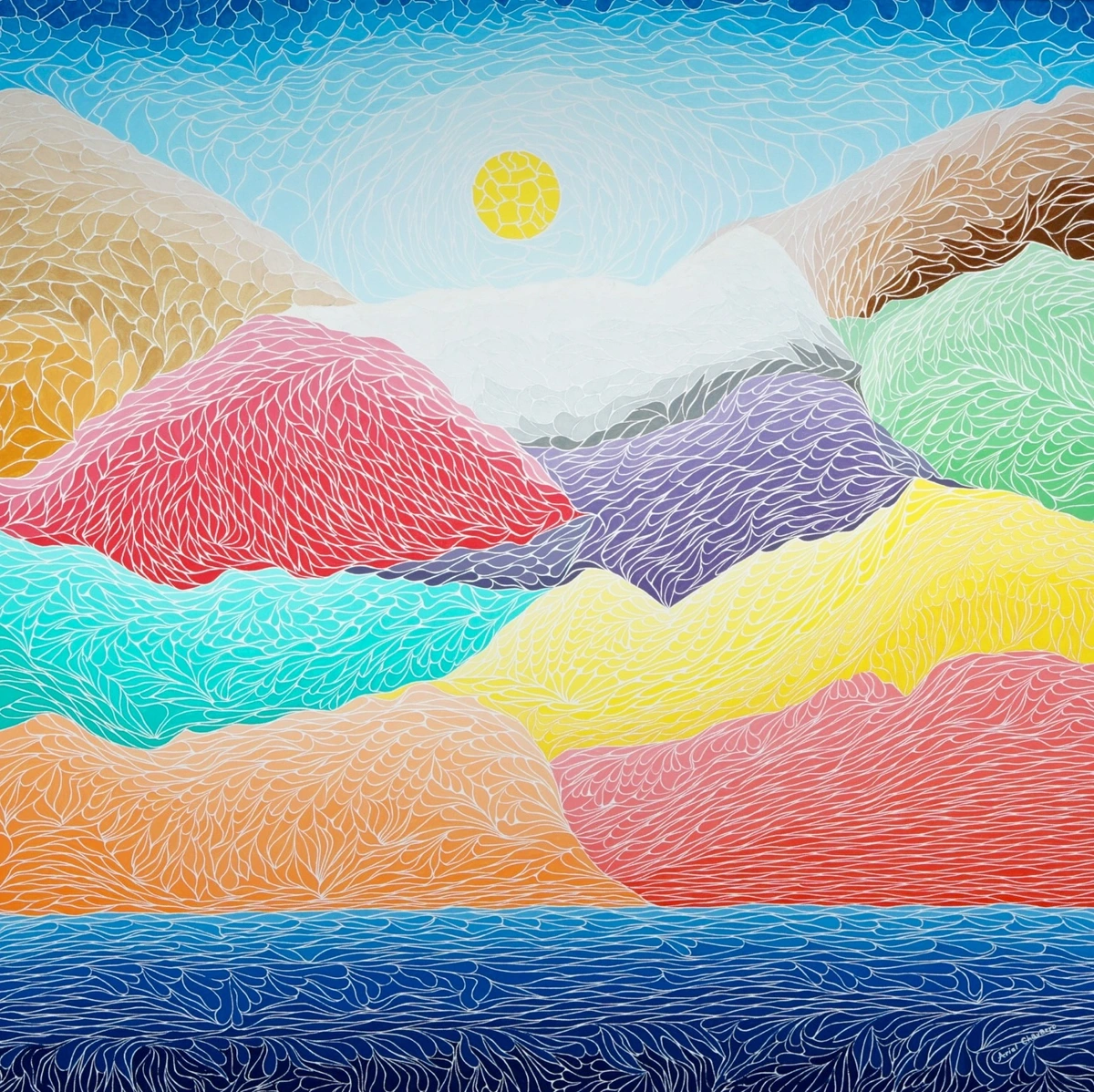
I often find myself starting with a natural element – the way light hits water, the texture of bark, the chaos of a storm – and then letting it dissolve into pure color and form on the canvas. It's less about depicting and more about channeling. It's about finding the underlying rhythm and energy of nature and expressing it visually. It's a conversation between me, the canvas, and the wildness outside (or inside!) my head.
- Minimalism and Conceptualism: While seemingly distant, even these movements can engage with nature. Minimalism might focus on the pure forms and spaces found in landscapes, reducing natural elements to their most basic geometric or structural components. Conceptual art might use nature as a subject for exploring ideas about environment, time, or human interaction with the planet, sometimes using text or documentation rather than traditional visual representation. It's a more intellectual engagement, perhaps, but still rooted in the natural world.
- Photography: From the sweeping vistas of Ansel Adams to macro shots of insects or abstract studies of light on water, photography offers a unique way to capture nature's details, scale, and fleeting moments with incredible fidelity or artistic interpretation. It allows us to see the world, both grand (landscapes, celestial events) and microscopic (insects, plant textures), through another's eyes, freezing moments in time that painting cannot. Wildlife photography, astrophotography, underwater photography – the sub-genres are as vast as nature itself.
- Land Art and Environmental Art: These movements take art into nature itself, using the landscape as the medium or addressing environmental issues directly. Think of large-scale earthworks by artists like Robert Smithson or sculptures made from natural materials. It blurs the line between art and the environment, often highlighting the beauty and fragility of the planet. It's art that lives with nature, not just about it. Eco-Art, a related but often distinct movement, might focus more explicitly on ecological restoration or raising awareness about environmental challenges, sometimes using natural processes as part of the artwork itself. For example, artist Mel Chin's Revival Field project (1990) used plants to absorb heavy metals from contaminated soil, turning a polluted site into a living artwork focused on remediation. Andy Goldsworthy, mentioned earlier, creates ephemeral sculptures from leaves, ice, or stones, highlighting the transient beauty and cycles of nature.
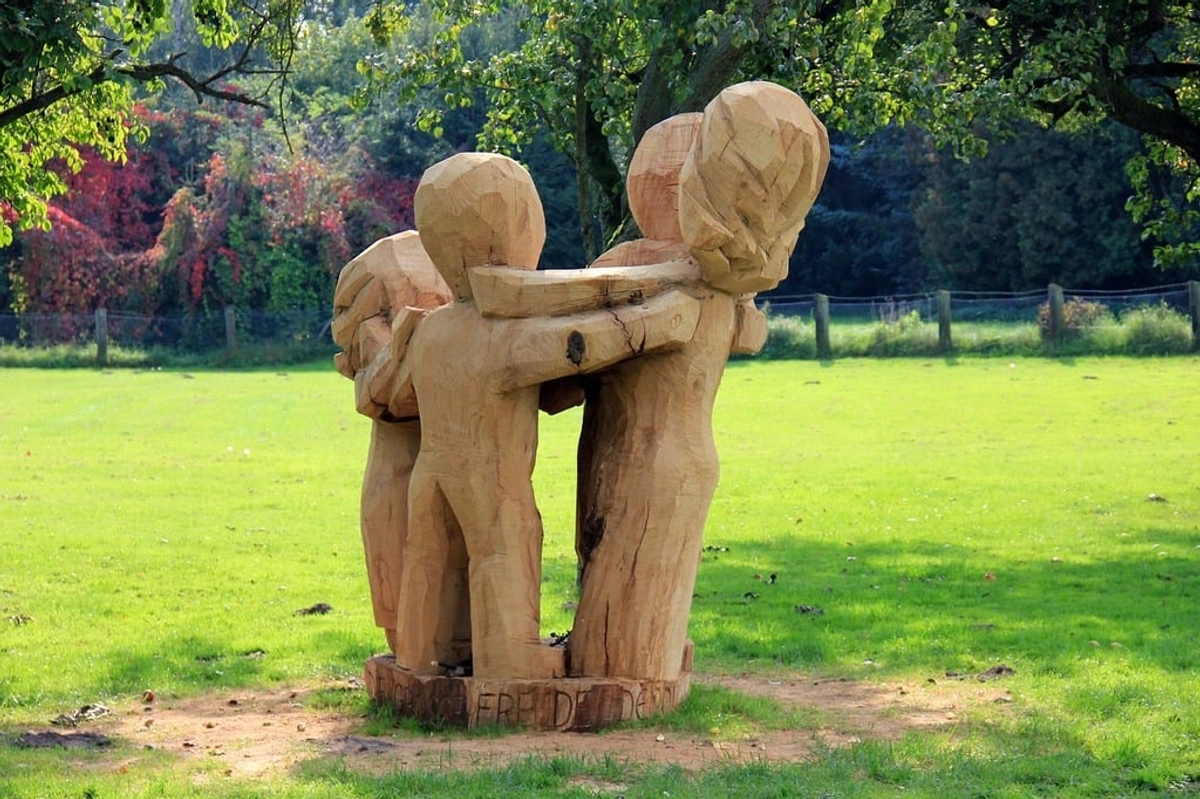
- Symbolism and Mythology: Nature is rich with symbolism. A tree can represent life, a mountain strength, water change. Artists often use these natural symbols to tell stories or explore deeper themes, drawing on ancient myths and universal human experiences. It's a language we instinctively understand, tapping into archetypes embedded in our collective consciousness. Think of the dove (peace), the snake (transformation or temptation), the lotus (purity and rebirth), or the oak (strength and endurance). These aren't just visual elements; they carry layers of accumulated meaning.
- Beyond the Visual: While painting, sculpture, and photography are the most common forms, nature also inspires artists working with sound (soundscapes, natural recordings), scent (olfactory art), and even performance art that interacts directly with natural environments. These less conventional mediums seek to capture the multi-sensory experience of being in nature, pushing the boundaries of how we define 'nature art'.
This is just scratching the surface, of course. Every artist who looks at nature finds their own unique way to respond, creating a vast and diverse body of work that continues to grow. It's a testament to the endless inspiration the natural world provides, and exploring these different approaches feels like wandering through a magnificent, ever-changing landscape of human creativity. It also makes you wonder, how do they do that? What techniques are involved?
A Quick Look at Styles and Nature
Style | Approach to Nature | Key Focus |
|---|---|---|
| Realism | Accurate depiction of appearance. | Fidelity, detail, objective reality. |
| Romanticism | Nature as powerful, emotional, sublime force. | Emotion, awe, drama, human place in nature. |
| Impressionism | Capturing fleeting light and sensory impression. | Light, color, atmosphere, subjective sensation. |
| Fauvism | Using intense, non-naturalistic color to express emotional energy/joy. | Expressive color, feeling, subjective response. |
| Expressionism | Distorting nature to convey inner psychological states (often intense/anxious). | Emotion, angst, inner world projected outwards. |
| Still Life | Depicting natural objects (flora/fauna) in symbolic compositions. | Symbolism, detail, transience, abundance. |
| Abstract Art | Translating nature's forms/energies into non-representational compositions. | Essence, rhythm, energy, feeling, form, color. |
| Land Art | Using the natural landscape as the medium itself. | Environment, site-specificity, natural processes. |
| Surrealism | Nature as a stage for the subconscious, dreamlike, or symbolic. | Symbolism, subconscious, juxtaposition, dreams. |
| Photography | Capturing details, scale, light, and moments with fidelity or interpretation. | Observation, light, composition, moment. |
| Art Nouveau | Incorporating organic forms and natural patterns decoratively and symbolically. | Flowing lines, natural motifs, elegance. |
| Eco-Art | Addressing environmental issues, sometimes using natural processes/restoration. | Ecology, awareness, remediation, sustainability. |
Nature's Elements as Artistic Archetypes
Beyond broad styles, artists often focus on specific elements of nature, finding in them powerful archetypes and endless visual possibilities. These elements aren't just backdrops; they become characters, symbols, or pure expressions of energy. It's like nature provides the fundamental building blocks, and artists arrange them into infinite visual poems.
- Trees and Forests: From ancient sacred groves to solitary sentinels, trees embody life, growth, rootedness, and connection between earth and sky. Artists depict them realistically, symbolically (like the Tree of Life), or abstractly, capturing the texture of bark, the dance of leaves in the wind, or the dense, mysterious atmosphere of a forest. Think of the detailed trees in Renaissance landscapes, the expressive, swirling trees of Van Gogh, or the abstract forms inspired by forests in contemporary art.
- Water: Water is perhaps the most dynamic element – constantly moving, reflecting light, taking countless forms (rivers, lakes, oceans, rain, ice). It symbolizes change, flow, emotion, purification, and the subconscious. Artists are drawn to its reflective qualities, its power in storms, its tranquility in still lakes, or its abstract patterns in ripples and waves. Monet's water lilies are an obvious example, but think also of the dramatic seascapes of Romanticism or the abstract blues and greens used to evoke the ocean's energy. For me, painting water is like trying to capture a moving thought – it's never the same twice, always shifting, always reflecting something new. I've spent hours just watching light play on the surface of a lake, trying to figure out how to translate that shimmering, fleeting moment into paint. It's maddening and exhilarating.
- Mountains and Rocks: Mountains represent permanence, strength, challenge, and the sublime (that feeling of awe mixed with a touch of fear when faced with something vast and powerful). Rocks speak of time, endurance, and the raw structure of the earth. Artists capture their imposing scale, their textures, the way light and shadow play across their surfaces, or use them as symbols of overcoming obstacles or seeking higher perspectives. From traditional Chinese landscape painting to abstract geological forms, mountains hold a powerful place. I remember hiking in the Alps once, feeling utterly insignificant next to those ancient peaks. That feeling of scale, of deep time, is something I've tried to hint at in some of my more textured abstract pieces.
- Sky and Atmosphere: The sky is the ultimate canvas for light and weather – sunrises, sunsets, turbulent clouds, starry nights. It evokes feelings of vastness, freedom, drama, or peace. Artists use the sky to set the mood of a landscape, explore the effects of light, or as a purely abstract field of color and energy. Think of the dramatic skies of the Dutch Masters, the Impressionists' focus on fleeting light, or Rothko's color fields that evoke the feeling of infinite space. Capturing the intensity of a storm brewing on the horizon, the way the light changes just before the rain hits – that's a challenge that keeps me coming back to the canvas.
- Light: Light isn't just something that illuminates a scene; it's a subject in itself. Artists are fascinated by how light changes throughout the day and seasons, its quality (harsh, soft, diffused), and its effect on color and shadow. Capturing the way light filters through leaves, reflects off water, or casts long shadows can be the primary focus of a piece. Light also carries powerful symbolism – divine presence, enlightenment, hope, or the fleeting nature of time. Think of the dramatic chiaroscuro in Baroque art used to highlight forms, or the Impressionists' dedication to capturing the momentary effects of sunlight.
- Flora and Fauna: Individual plants and animals have been subjects since the very beginning. Beyond realistic depiction, they carry rich symbolic meanings – a lion for courage, a rose for love, a bird for freedom. Artists use them to tell stories, explore character, or simply celebrate the intricate beauty of life forms. Botanical illustration, wildlife art, or stylized animal motifs in decorative arts all show this enduring fascination.
Focusing on these elements allows artists to tap into universal human experiences and connections to the natural world, creating art that resonates deeply across cultures and time. It's a way to speak a language understood by everyone, regardless of background, because it's rooted in the shared experience of living on this planet. It also requires mastering specific techniques to bring these elements to life.
Nature's Artistic Language: Elements and Meaning
Natural Element | Common Symbolism | Artistic Approaches |
|---|---|---|
| Trees/Forests | Life, growth, rootedness, connection, mystery. | Realistic detail, symbolic forms, abstract patterns, atmospheric depiction. |
| Water | Change, flow, emotion, purification, subconscious. | Capturing movement/reflection, abstract patterns, evoking tranquility or power. |
| Mountains/Rocks | Permanence, strength, challenge, time, the sublime. | Depicting scale/texture, playing with light/shadow, symbolic representation. |
| Sky/Atmosphere | Vastness, freedom, drama, peace, mood. | Capturing light/weather effects, abstract color fields, setting scene's emotional tone. |
| Light | Divine, enlightenment, hope, fleeting time, clarity. | Chiaroscuro, Impressionistic light studies, capturing reflections/shadows, symbolism. |
| Flora/Fauna | Life forms, specific symbolic meanings (courage, love). | Realistic depiction, stylized motifs, symbolic use, botanical/zoological studies. |
Techniques for Capturing the Wild
Depicting nature isn't just about what you see or how you feel; it's also about the technical skills used to translate that onto a canvas, paper, or through a lens. Different mediums and styles call for specific approaches:
- Painting: Techniques vary wildly. Realists might use fine brushes and layering to build up detail in leaves or bark. Impressionists famously used visible brushstrokes (like dabs or dashes) to capture the vibration of light and color. Abstract painters might use gestural strokes, pouring, or scraping to convey energy or texture inspired by nature. Capturing the translucence of water or the texture of rock requires specific paint handling. En plein air painting, as mentioned, adds the challenge of working quickly with changing light and weather – a true test of skill and patience! I've had canvases attacked by bugs, paint smeared by sudden gusts, and even had a bird try to perch on my easel. It's definitely not always the serene experience the paintings might suggest! Using natural pigments, derived from minerals, plants, or earth, is another way artists connect their materials directly to the natural world, a practice with ancient roots that continues today.
- Drawing and Illustration: From the precise lines of botanical illustration to the expressive charcoal strokes capturing the form of a tree, drawing is fundamental. Cross-hatching can create texture for bark or rock; soft shading can evoke misty atmospheres. Scientific illustration demands incredible accuracy, while expressive drawing focuses on capturing movement or feeling. It's the foundation for so much art, a direct connection between the artist's hand and the observation of nature. Trying to draw every single vein on a leaf can be meditative, or it can make you want to pull your hair out – depends on the day, honestly.
- Printmaking: Techniques like etching, woodblock printing (think of those incredible Japanese landscapes!), lithography, or screen printing offer unique ways to interpret natural forms and textures. The process itself, often involving carving or chemical processes, can lend a distinct aesthetic to the final image, sometimes simplifying forms or creating bold contrasts that feel inherently tied to the raw materials of nature.
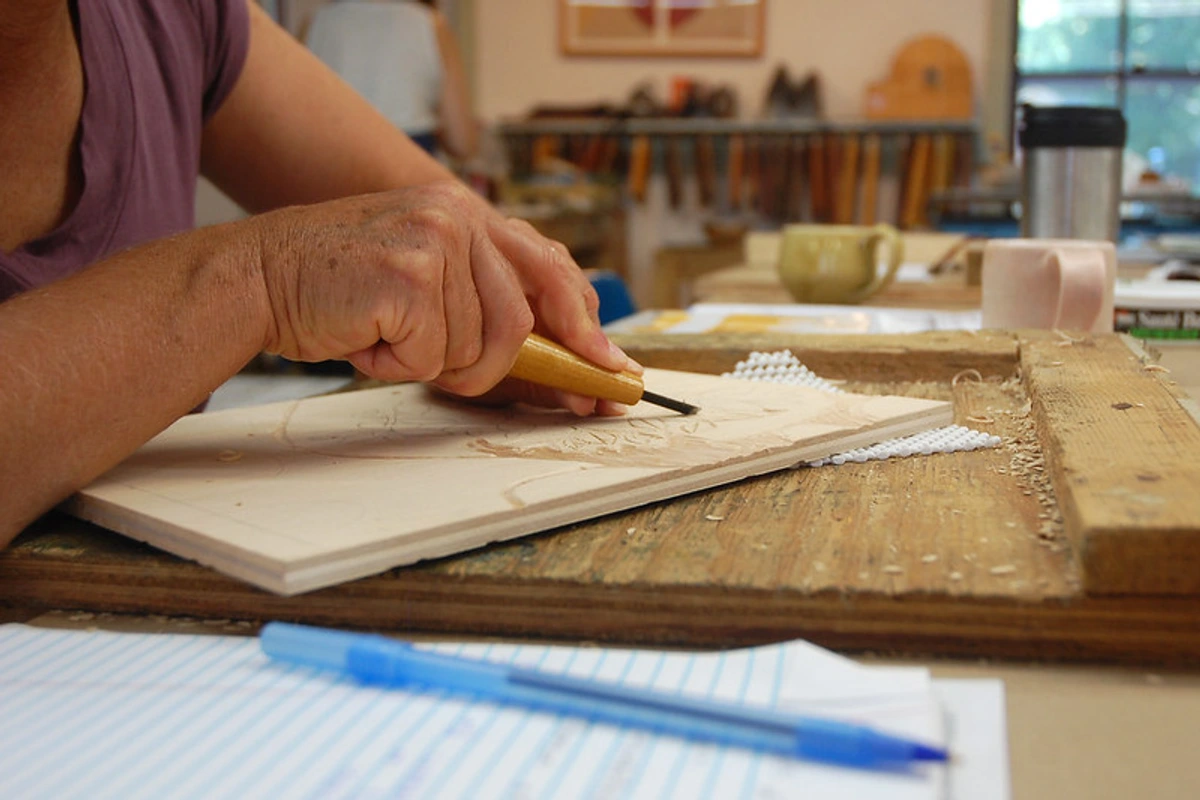
- Photography: This medium offers unique ways to interact with nature. Long exposures can turn flowing water into silky streaks or capture the movement of stars. Macro photography reveals the intricate details of insects or plant textures. Landscape photography requires understanding composition, light, and depth of field to convey the grandeur or intimacy of a scene. Wildlife photography demands patience and speed to capture fleeting moments. It's a way to freeze time, to show us details we might miss with the naked eye, or to present familiar scenes in entirely new ways.
- Sculpture: Artists working in 3D might carve wood or stone to mimic natural forms or textures. They might use found natural objects (driftwood, stones) in assemblages. Land artists manipulate the earth itself, using techniques like digging, piling, or arranging stones on a massive scale. Working with natural materials often means understanding their properties – how wood splits, how stone weathers, how ice melts. It's a very tactile, grounded way to engage with nature.
- Textile Art: Nature inspires patterns, colors, and textures in textiles. Weaving techniques can mimic the structure of leaves or bark. Dyeing with natural pigments connects the art directly to the earth. Embroidery or quilting can depict flora and fauna with intricate detail. It's a tactile way to engage with nature's beauty, bringing its forms and colors into soft, pliable materials.
- Mixed Media and Collage: Combining different materials, including natural elements like leaves, sand, or bark, allows artists to create layered works that literally incorporate pieces of the natural world. Collage can juxtapose natural imagery in unexpected ways, creating new narratives or abstract compositions inspired by the environment.
- Digital Art: Technology has opened up fascinating new avenues. Digital painting and illustration can mimic traditional techniques or create entirely new, fantastical natural worlds. Photo manipulation allows artists to blend, distort, or enhance natural imagery. Generative art uses algorithms inspired by natural processes (like fractals or growth patterns) to create complex visual forms. It's a way to explore nature through code and pixels, pushing the boundaries of representation.
Each technique offers a different way to interpret and connect with the natural world, adding another layer to the rich tapestry of nature-inspired art.
Why Nature Art Resonates with Us: More Than Just Pretty Pictures
So, why does a painting of a forest or an abstract piece inspired by the ocean make us feel something? I think it boils down to a few things, tapping into something fundamental about being human:
- Our Innate Connection (Biophilia): There's a concept called Biophilia, popularized by biologist E.O. Wilson, which suggests humans have an innate tendency to connect with nature and other living systems. We evolved in nature; it's in our DNA. Even if we live in a concrete jungle, there's a part of us that responds to the patterns, colors, and forms of the natural world. Seeing it depicted in art can tap into that deep, often subconscious, connection, providing a sense of comfort, belonging, and even reducing stress. Why does it reduce stress? Research suggests it's partly due to the presence of fractal patterns (like those in tree branches, coastlines, or clouds) which our brains process efficiently and find calming. Certain colors, particularly blues and greens, are associated with safe, resource-rich environments and can evoke feelings of tranquility. Even visual representations of natural light and open spaces can have a positive psychological effect. Art acts as a visual echo of home, a reminder of our biological roots. It can even evoke the sensory experience – looking at a painting of a forest might make you feel the cool air or hear the rustling leaves, even if you're just sitting on your sofa. It's like a little mental escape button.
- Beauty and Awe: Nature is undeniably beautiful, often on a scale that inspires awe. Think of the Grand Canyon or the Northern Lights. Art allows us to bring that beauty indoors, to contemplate it, and to experience a sense of wonder even when we can't be outside. It offers a glimpse of the sublime, that feeling of being overwhelmed by something vast and powerful, yet also feeling a part of it. This feeling of awe can shift our perspective, making us feel smaller but also more connected to something larger than ourselves, fostering humility and a sense of shared humanity. It reminds us that there's something much bigger and more magnificent than our daily routines.
- Escapism and Calm: Looking at a serene landscape painting can be like a mini-vacation for the mind. It offers a sense of peace, a break from the stresses of daily life. It's a visual sanctuary, a window to a quieter, more expansive world. In a busy, noisy world, a piece of nature art can be a much-needed breath of fresh air, a moment of visual meditation. It's a quiet corner for your eyes and your mind.
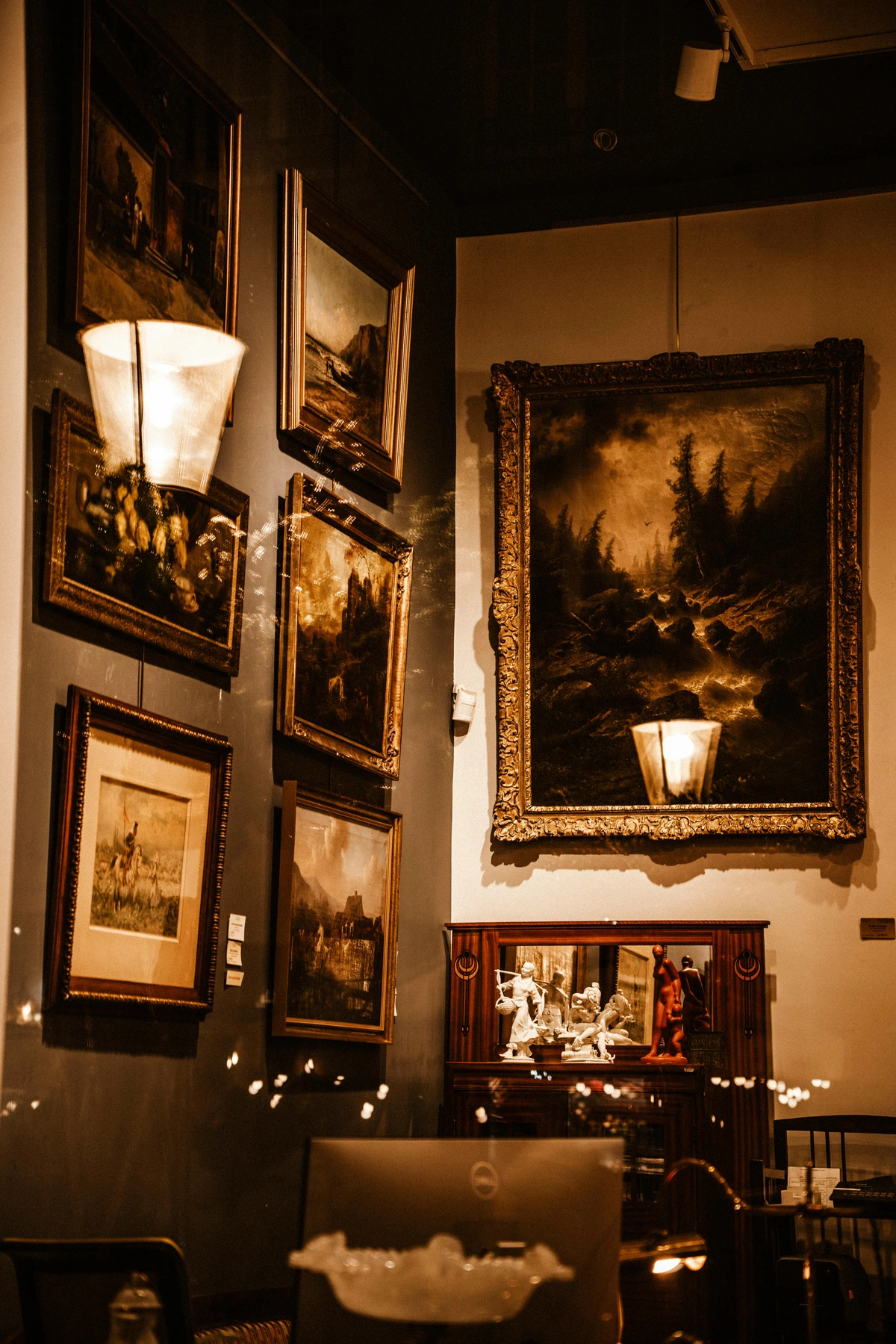
- Reflection and Contemplation: Nature is constantly changing – seasons shift, weather rolls in, life cycles unfold. It also exhibits incredible mathematical patterns, from the spiral of a seashell (Fibonacci sequence) to the branching of trees (fractals). Art about nature can capture these moments of transition or permanence, or highlight these underlying structures, inviting us to reflect on our own lives, the passage of time, and the intricate order within the apparent chaos of the world around us. It holds up a mirror, reflecting our own impermanence and connection to larger cycles. It makes you pause and think, doesn't it?
- Memory and Nostalgia: A painting of a specific type of tree might remind you of your childhood backyard. The colors of a sunset could evoke memories of a particular trip or moment. Nature scenes in art often act as powerful triggers for personal memories and feelings of nostalgia, creating a deeply personal and emotional connection to the artwork that goes beyond its visual qualities. It's like a visual shortcut to a happy memory.
- Environmental Awareness and Conservation: Especially in contemporary art, nature is often depicted to highlight environmental issues, reminding us of the fragility and importance of protecting our planet. It can be a powerful call to action, making the abstract concept of climate change or habitat loss feel more immediate and personal. It's art with a purpose, urging us to pay attention and consider our impact. Some artists even use their work to directly aid conservation efforts.
- Sense of Interconnectedness and Spirituality: For many, nature is a source of spiritual connection, a reminder that we are part of something much larger than ourselves. Art that captures the vastness of the cosmos, the intricate web of an ecosystem, or the raw power of the elements can evoke this feeling of interconnectedness, fostering a sense of wonder, humility, and belonging within the grand tapestry of existence. It's a feeling I often chase in my own abstract work – that sense of being a small part of a vast, energetic whole.
For me, creating art inspired by nature is a way to process my own experiences and feelings about the world. It's a conversation between me, the canvas, and the wildness outside (or inside!) my head. And when someone connects with that piece, it feels like we're sharing a little bit of that conversation, a shared moment of recognizing something beautiful or profound. So, how do you bring that feeling home?
Bringing Nature Art into Your Space: Cultivating Your Indoor Oasis
If you feel that pull towards nature-inspired art, bringing it into your home or office can be a wonderful way to connect with those feelings daily. Whether you're looking for a calming landscape for your bedroom or a vibrant abstract piece for your living room, there's something out there for everyone.
Consider the mood you want to create. Do you want the energy of a storm, the tranquility of a forest, or the vibrant chaos of a coral reef? The style and subject matter will guide your choice. A piece depicting calm water might be perfect for a meditation space (Choosing Art for Your Meditation Space), while a dynamic mountain scene could energize an office (How to Decorate Your Office). Think about how the type of nature depicted aligns with the feeling you want the room to evoke. Also, consider the specific symbolism of the natural elements depicted – does a tree represent growth or stability for you? Does water symbolize change or calm? You can find tips in guides like Choosing Art Based on Room Color.
Don't be afraid to explore different mediums too – paintings, prints, photography, sculptures, or even textile art inspired by natural patterns (The Rise of Textile Art). Each brings a different texture and presence to a space. Also, consider the scale of the artwork relative to your wall and furniture, and importantly, the size of the room itself. Scale isn't just about physical size, but also how much visual weight and presence the piece has in the room. A large statement piece can anchor a room, while smaller pieces can create intimate moments or be part of a gallery wall. And don't forget the framing – it can dramatically change how a piece is perceived and help it integrate with your decor. Oh, and speaking of practicalities, don't forget to consider the lighting! Natural light is great, but direct sunlight can damage art (Protecting Your Art from Sunlight). Think about how spotlights or ambient lighting will affect the piece at different times of day. I once hung a piece that looked amazing in the morning light, only to realize it was completely washed out by afternoon sun. Live and learn, right? Also, consider the medium of the art in relation to the room's environment. A delicate watercolor or photograph might not be best suited for a humid bathroom (Bathroom Art Guide) due to moisture damage, while a metal sculpture or photographic print behind UV-protective glass might fare better. Always check the artist's recommendations for care.
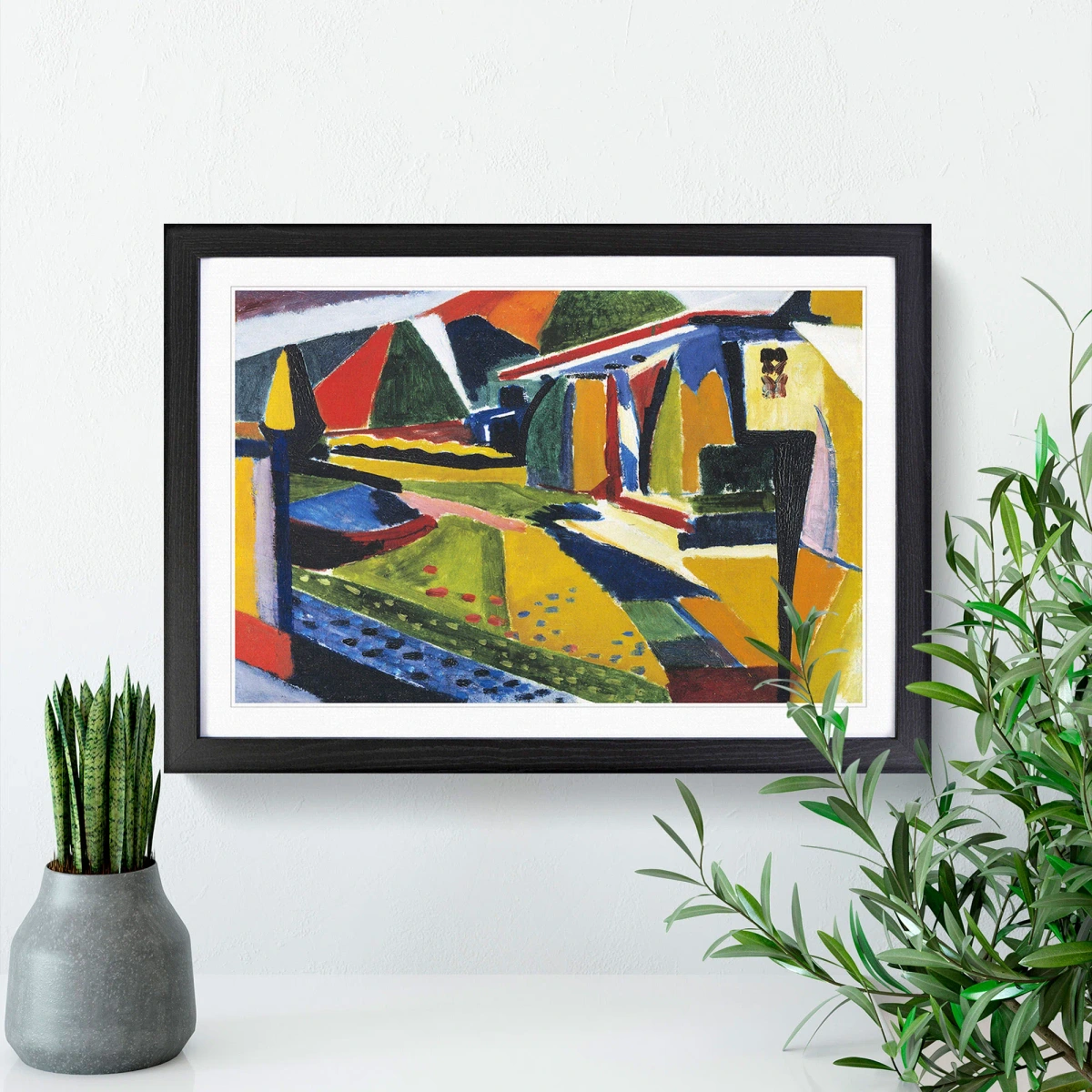
Integrating Nature Itself
Beyond the art on your walls, consider how you can bring actual nature into your space to enhance the connection. A few well-placed plants can soften lines, add vibrant color and texture, and even improve air quality – a living sculpture, if you will. Arranging furniture to highlight a beautiful view outside your window turns that vista into a dynamic, ever-changing piece of art. Using natural materials in your decor – wood, stone, woven fibers – can create a tactile connection to the earth. It's about creating a holistic environment where art and nature work together to foster a sense of peace and well-being. Think of it as curating your own personal ecosystem, indoors.
If you're just starting out, exploring where to buy art online or visiting local art galleries can be great first steps. You might also find unique pieces at artist collectives or even unexpected places. Don't feel pressured to buy something expensive right away. Find pieces that genuinely speak to you and your connection with the natural world. You can find tips on buying art for beginners or buying art on a budget. You could even consider commissioning a piece inspired by a place or natural element that holds personal meaning for you – a truly unique way to bring the wild home.
And hey, if you're curious about my own take on abstract nature, you can always check out my art for sale. Just a thought! 😉
Contemporary Nature Artists to Explore
While the history is rich, nature continues to inspire incredible contemporary artists working across various mediums. Here are just a few examples to get you started:
- Andy Goldsworthy: A master of Land Art, known for his ephemeral sculptures created from natural materials like ice, leaves, stones, and wood, often in remote locations. His work highlights the transient beauty and cycles of nature.
- Olafur Eliasson: His large-scale installations often explore natural phenomena like light, water, and temperature, bringing elements of the outdoors into gallery spaces and challenging our perception of the environment.
- Maya Lin: Best known for the Vietnam Veterans Memorial, her work often engages with landscape and environmental themes, creating powerful, often minimalist, forms that interact with the natural world.
- Wolfgang Laib: Creates minimalist installations using natural materials like pollen, milk, rice, and beeswax, focusing on purity, simplicity, and the spiritual connection to nature.
- Richard Long: A Land Artist who creates sculptures and walks in landscapes, often documenting his journeys and interventions through photographs and text pieces, emphasizing the act of walking and the relationship between body and landscape.
- April Gornik: Known for her large-scale, dramatic landscape paintings that often depict stormy skies, turbulent seas, or dramatic light effects, evoking a sense of the sublime and the power of nature.
- Hiroshi Sugimoto: A photographer whose seascapes, taken with long exposures, reduce the ocean and sky to minimalist fields of tone and light, capturing the timeless essence of these elements.
- Jennifer Steinkamp: Creates vibrant, immersive digital art installations featuring animated trees and natural forms that respond to the viewer, blurring the lines between the digital and natural worlds.
- Christo and Jeanne-Claude: Famous for their large-scale environmental installations, like wrapping buildings or creating fabric fences across landscapes, which temporarily alter familiar natural or urban environments, prompting viewers to see them anew.
- Agnes Denes: A pioneer of Environmental Art and Eco-Art, known for her conceptual works addressing ecological and social issues, such as Wheatfield – A Confrontation (1982), where she planted a two-acre wheat field in downtown Manhattan.
- Diana Thater: Creates video installations that explore the relationship between humans and the natural world, particularly focusing on endangered species and ecosystems, using color and light to create immersive environments.
- Ursula von Rydingsvard: Known for her monumental sculptures, often made from cedar wood, which evoke natural forms like mountains, waves, or geological strata, emphasizing texture and scale.
Exploring the work of contemporary artists like these shows how the conversation between art and nature is constantly evolving, finding new forms and addressing current environmental concerns.
FAQ: Your Nature Art Questions Answered
As I've explored this topic and created my own nature-inspired pieces, I often get asked certain questions. Here are a few common ones:
Q: Is landscape painting still popular? A: Absolutely! While styles have evolved, the desire to depict and connect with landscapes remains strong. Contemporary artists continue to explore landscapes through various lenses, from traditional to highly abstract. It's an enduring genre because the source material is, well, eternal. It's funny how something so ancient can feel so fresh depending on the artist's perspective.
Q: How can I find nature art that fits my home decor? A: Think about the colors and overall style of your room. Do you need something calming or a piece that adds a pop of color? Look for art that complements your existing palette or provides a pleasing contrast. Consider the scale of the artwork relative to your wall space and furniture, and the size of the room itself. You might find tips in guides about how to decorate your home.
Q: What's the difference between landscape art and environmental art? A: Landscape art typically depicts the natural environment. Environmental art often uses the natural environment as the medium or addresses environmental issues directly, sometimes even creating temporary installations within nature itself. Environmental art is often more conceptual or activist in nature, directly engaging with ecological concerns, whereas landscape art is primarily focused on representation or interpretation of the scene. Eco-Art is a related term that often specifically refers to art focused on ecological restoration or raising awareness about environmental problems.
Q: Can abstract art be considered nature art? A: Definitely! Many abstract artists draw heavily on nature for inspiration, translating its forms, textures, colors, and energies into non-representational works. It's a way of capturing the essence of nature rather than its literal appearance. For me, it's about the feeling, the movement, the underlying structure – things that aren't always visible but are deeply felt. It's like trying to paint the sound of a forest, not just the trees.
Q: How do artists find inspiration in nature? A: Inspiration comes in countless ways! It could be observing the play of light on water, the intricate patterns of leaves, the raw power of a storm, the quiet stillness of a forest, or even the mathematical beauty found in natural forms. It's about looking closely, feeling deeply, and translating those observations and emotions into visual form. Sometimes it's planned, sometimes it's a spontaneous response to being outdoors. And sometimes, it's just sitting and watching a cloud drift by, letting your mind wander. It's about being present and open to the subtle (and not-so-subtle) wonders around us.
Q: What are some challenges artists face when depicting nature? A: Oh, where to start? Capturing the fleeting nature of light and weather is a huge one – that beautiful sunset is gone in minutes! Dealing with the elements en plein air (wind, bugs, sudden rain) is another, as I mentioned earlier – definitely less romantic in practice! Translating the immense scale of a mountain range or the intricate detail of a tiny insect onto a canvas or through a lens requires different skills. And then there's the challenge of conveying the feeling or essence of a place, not just its appearance. It's a constant negotiation between what you see, what you feel, and how you can translate that into your medium.
Q: Are there ethical considerations in Land Art? A: Absolutely. Because Land Art often involves directly altering the natural landscape, artists must consider the potential environmental impact of their work. Is it temporary? Are the materials natural and biodegradable? Does it disrupt habitats? Responsible Land Art seeks to work with nature, minimizing harm and sometimes even aiming to restore or highlight ecological issues. It's a crucial dialogue between the creative act and ecological responsibility.
Q: How has technology changed nature art? A: Technology has opened up fascinating new avenues! Artists now use drones for breathtaking aerial photography and videography of landscapes. Digital tools allow for manipulation and abstraction of natural imagery in ways previously impossible. Some artists even use data visualization techniques to create art from ecological data, or employ bio-art methods using living organisms to comment on nature. It's a constantly evolving field, pushing the boundaries of what 'nature art' can be.
Q: What are some lesser-known ways artists depict nature? A: Beyond painting and photography, nature inspires artists in many other mediums. Think of intricate textile art using natural fibers or patterns (The Rise of Textile Art), ceramics incorporating organic forms or textures, sound art that records or mimics natural soundscapes, or performance art that interacts with specific natural environments. Nature's influence is truly pervasive across all artistic disciplines.
Q: How can I learn to interpret abstract nature art? A: Don't try to find a literal tree or mountain! Instead, focus on the feeling the piece evokes. Look at the colors – what emotions do they suggest? Observe the lines and shapes – do they feel chaotic like a storm, flowing like water, or rooted like a tree? Think about the texture. Read the artist's statement if available; they often provide clues about their inspiration. It's about connecting with the energy and emotion the artist felt, rather than identifying specific objects. Let your own feelings and experiences with nature guide your interpretation.
Q: Where can I find art by emerging or local nature artists? A: Local art galleries are a great starting point, especially those that focus on regional artists or themes. Art fairs often feature emerging talent. Online platforms dedicated to independent artists or local art scenes can also be valuable resources. Don't forget university art galleries or open studio events. Engaging with your local art community is key to discovering hidden gems! You might also find nature-inspired pieces in unexpected places like cafes or boutiques (Finding Art in Unexpected Places).
Q: Is nature art a good investment? A: Like any art, the investment potential varies greatly depending on the artist, provenance, condition, and market trends. Buying art should primarily be about connecting with a piece you love. If you are interested in art as an investment, it requires careful research into the artist's career, market history, and future potential. Guides on art as an investment can offer more insight.
Q: How does climate change influence contemporary nature art? A: Climate change and environmental activism are increasingly central themes. Many contemporary nature artists use their work to raise awareness about ecological crises, depict the impact of human activity on the environment, or explore themes of loss, resilience, and hope in the face of environmental challenges. It adds a layer of urgency and social commentary to the genre.
Q: What makes a nature art piece 'good'? A: "Good" art is subjective, but for nature art, it often comes down to a few things: technical skill (does the artist effectively capture what they intend?), emotional resonance (does it evoke a feeling or connection in you?), originality (does it offer a fresh perspective?), and concept (is there a deeper idea or message?). Ultimately, if a piece speaks to your personal connection with nature, that's a pretty good sign it's 'good' for you.
Q: Can I commission a nature-inspired artwork? A: Absolutely! Commissioning a piece allows you to work with an artist to create something deeply personal, perhaps depicting a favorite landscape, a beloved plant or animal, or an abstract interpretation of a natural phenomenon that holds special meaning for you. It's a wonderful way to get exactly what you want and support an artist directly. You can find guides on commissioning art.
Q: How do I care for nature-inspired art, especially if it uses natural materials? A: Care depends heavily on the medium. Paintings need protection from direct sunlight and humidity (Protecting Your Art from Sunlight, How to Take Care of Your Painting). Photography should be framed with UV-protective glass. Art incorporating natural materials might require specific conditions to prevent decay or damage from pests. Always ask the artist or gallery for specific care instructions. For outdoor sculptures, weatherproofing is key (Protecting Outdoor Sculptures).
Q: Does your personal art journey involve nature? A: Absolutely. Nature is a constant wellspring for me. My abstract work often starts with a feeling or observation from the natural world – the chaos of a storm, the quiet energy of growth, the way light hits water. It's less about depicting a specific scene and more about capturing that raw energy and translating it into color and form. You can see how this translates into my work by exploring my art for sale or reading about my journey.
The Enduring Call of the Wild Canvas
Art about nature is more than just a genre; it's a testament to our fundamental relationship with the world around us. It reminds us of where we came from, offers us solace and inspiration, and encourages us to look closer, both at the intricate details of a leaf and the vast expanse of the sky. It's a reflection of our place within the larger ecosystem, a visual echo of the wildness that still lives within us.
Whether you're an artist creating, a collector seeking, or simply someone who finds peace in a walk through the woods, the connection between art and nature is a powerful one. It's a conversation that will continue as long as there are artists to observe and a natural world to inspire. For me, it's an endless wellspring, a constant dialogue that shapes my work and my perspective. And maybe, just maybe, that next piece of art you fall in love with will be a little slice of the wild, brought indoors, a reminder of that essential connection, a quiet echo of the timeless muse.
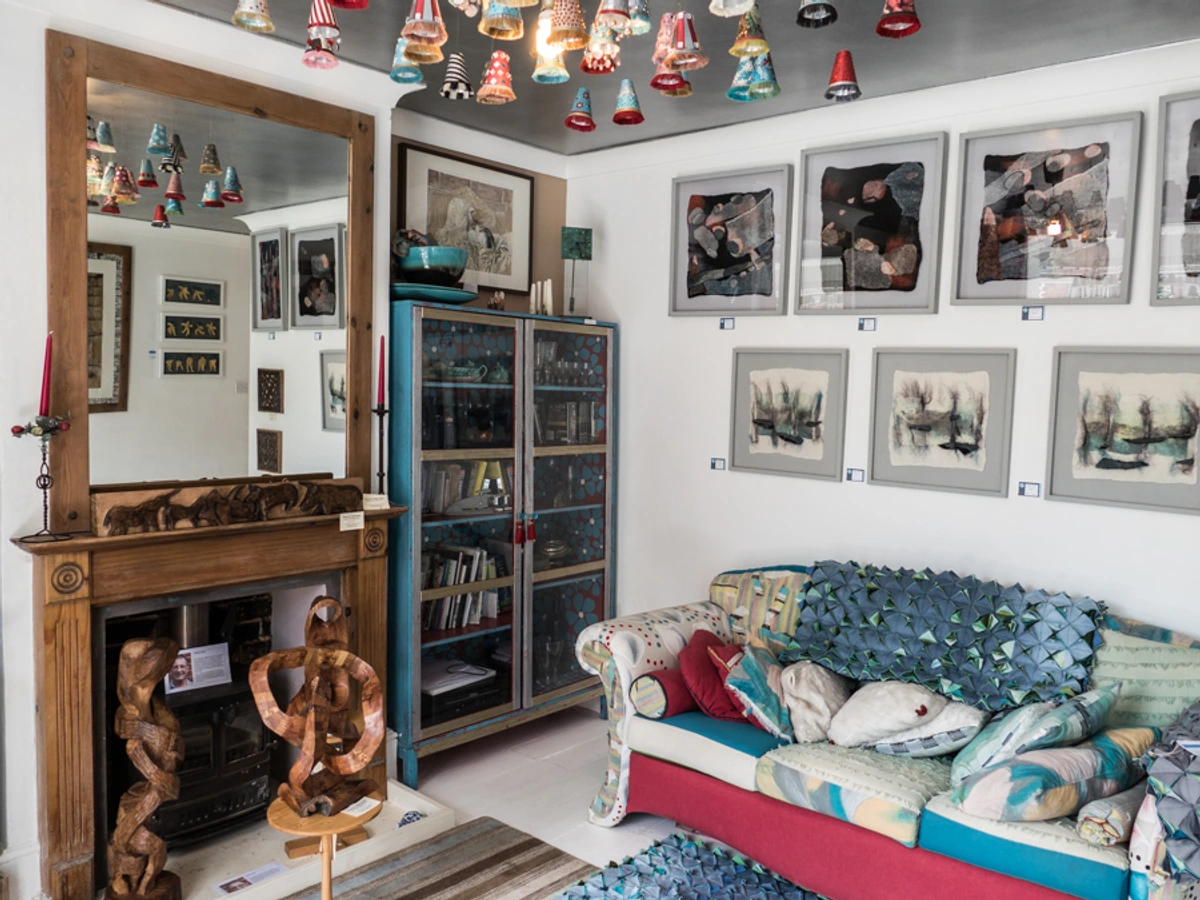
So go on, let nature inspire you. And let art bring that inspiration home. Explore galleries, visit museums (Museums Worldwide), or simply look out your window – the wild canvas is everywhere, waiting to be seen and felt. And if you're looking for a piece to start your own collection, feel free to browse my art for sale – you might just find a piece of the wild that speaks to you.




